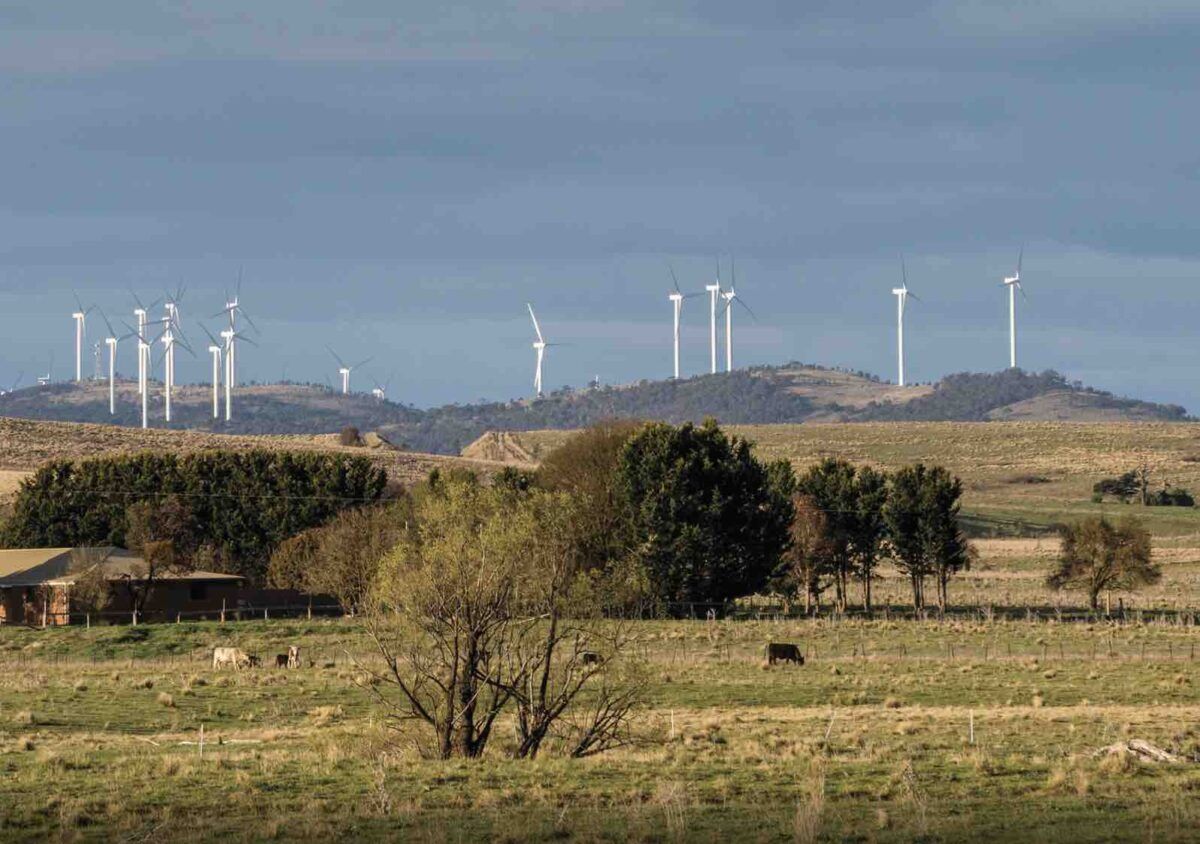Plans to build a nearly 500 megawatt wind farm in central-western New South Wales have been abandoned, with the project’s developer, RES, claiming that “changing economic and planning requirements” in the state have made it too challenging to proceed.
RES this week quietly withdrew the 476MW Barneys Reef wind farm project from the federal environmental assessment process, more than two years after it joined the queue for a green tick under the EPBC Act.
In a statement emailed to Renew Economy on Wednesday, RES said it had made “the difficult decision to not proceed” with the Access Rights Application Process for the wind farm, a process that is overseen by the state government body, EnergyCo.
The 68 turbine project has been in development since 2020 in the coveted Central-West Orana renewable energy zone (REZ), proposed for construction around 12km north of Gulgong alongside a 500MW solar farm it is also planning for the region.
RES said it has also notified EnergyCo to remove the Hub to Project connection it is currently planning and securing land for.
“This decision has been made in light of the changing economic and planning requirements for NSW wind farm development, which makes this project challenging for RES to proceed with at this time,” the statement says.
“RES would like to thank landowners and the community for their support throughout the development of the projects so far. We continue to develop Tallawang Solar Farm, which is progressing through the planning process and will be applying for Access Rights in the current application process.”
It appears, however, that the project had already been pulled from the NSW planning process in late August, with a letter to the state planning department simply saying RES had determined the project “is not viable.”
NSW in January announced plans to finesse the state’s grid access rights framework to help avoid the sort of bottlenecks that have plagued many large-scale renewables projects and eaten away at investor confidence.
As RenewEconomy has reported, the original idea was to award access rights to the state’s five renewable energy zones along with the underwriting agreements known as LTESAs (long term energy service agreements) that were being offered to new wind, solar and battery projects.
But the first allocation of access rights was pulled last November because the system was deemed to be too complex, and will now be offered separately to the LTESA program, and fast-tracked to enable the state to complete the design of the CWO REZ.
As part of the new access scheme – which the Energy Corporation of NSW (EnergyCo) kicked off for the CWO REZ in April – solar, wind and battery projects that gain access rights will pay a fee, a portion of which will go towards providing community and employment benefits in the Renewable Energy Zones.
RES has not yet elaborated on which part of the changed planning requirements, in particular, brought the Barneys Reef project undone, but in its statement the company stresses that it has been active in the Gulgong and Dunedoo communities since 2020, including with economic support.
“Over the past three years, the project has sponsored events such as the Gulgong and Dunedoo agricultural shows, Dunedoo Art Unlimited, Red Hill Environmental Education Centre, Henry Lawson Festival, and many others,” the statement says.
UK-based renewables giant RES has plenty of experience in Australia – and plenty more active projects in its pipeline, including the Tallawang solar farm, which will forge ahead in the CEO REZ at 500MW.
Further north it has state approval for the 436.5MW Tarong West wind farm in Queensland, inland from the Sunshine Coast, which it is developing for the state-owned Stanwell Corporation.
RES Australia has built its onshore renewables book by buying 320 MW of asset management contracts from Squadron Energy-owned Windlab in May.
The deal included the Kennedy Energy Park, which combines 43.2MW of wind, 15MW of solar and a 2MW/4MWh battery in north Queensland, and the 240 MW Ararat wind farm that RES actually built in 2017.



